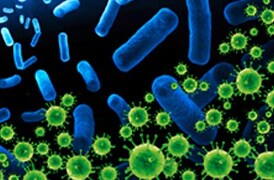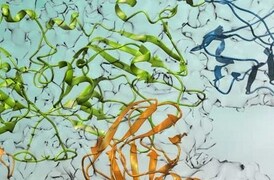Search Thermo Fisher Scientific
- Contáctenos
- Orden Rápida
-
¿No tiene una cuenta? Crear una cuenta
Search Thermo Fisher Scientific
The Thermo Scientific Falcon 4i Direct Electron Detector is the ideal solution for your single particle analysis and cryo-tomography applications. With its unique combination of high image quality, high throughput, efficient lossless data compression enabled via electron-event representation (EER), and a streamlined solution for data management and quality monitoring, the Falcon 4i Detector offers a productivity and performance boost that meets the demands of today’s scientific and industrial communities.
The Falcon 4i Detector is fully integrated in Thermo Scientific EPU and Tomography Software, allowing for smooth daily instrument operation and data acquisition. The camera’s output is recorded through the Data Management Platform (DMP), which also facilitates the organization, viewing, and sharing of single particle cryo-EM data. You can easily view all the project data and metadata at the microscope or remotely through a secure connection, and can comment and share it with collaborators.
Note: The Falcon 4i Direct Electron Detector is fully compatible with 200 and 300 kV Thermo Scientific Krios, Glacios, and Talos Cryo-Transmission Electron Microscopes (Cryo-TEMs) operating with Windows 10. A Falcon 4i Upgrade Kit is available for the Falcon 4 Direct Electron Detector. The Falcon 4i Upgrade Kit upgrade is also applicable for the Thermo Scientific Selectris and Selectris X Imaging Filters.
Designed for stability and speed, the Thermo Scientific Selectris and Selectris X Imaging Filters are post-column imaging filters that improve the contrast of TEM images, resulting in high-resolution structures up to atomic resolution. Paired with the latest generation Thermo Scientific Falcon 4i Direct Electron Detector, Selectris Filters enable you to obtain high-resolution structures quickly, revealing new biological insights. To further increase the productivity and ease-of-use of your cryo-electron microscopy (cryo-EM) research, these filters are fully integrated into Thermo Scientific EPU Software, Thermo Scientific Tomography Software, and instrument operation software. The Selectris and Selectris X Imaging Filters are available on Thermo Scientific Krios and Glacios Cryo-TEMs.
Apoferritin reconstruction at 1.2 Å resolution created from 3,600 images of 297k particles acquired in 6 hours (EPU data acquisition on the Thermo Scientific Krios G4 Cryo-TEM). Recorded at a dose rate of 5.4 e/p/s.
Amyloid-β 42 filaments isolated from human brain resulting in a 2.5 Å resolution reconstruction. Data collected at dose rate 8 e/p/s, 40 e/A2 total dose and 570 movies/hr. Collaboration with MRC Laboratory of Molecular Biology. doi: https://doi.org/10.1101/2021.10.19.464936
Get leading detective quantum efficiency (DQE) across the full spatial frequency range. High DQE at low spatial frequency lets you visualize and align smaller and more flexible proteins, while high DQE at high spatial frequencies lets you achieve results with fewer images or increased resolution.
The large signal generated by the Falcon 4i Detector’s large pixels, combined with low noise, yields high SNR – electron events can be unambiguously separated from the background noise (left) in comparison to detectors with smaller pixels (right).
The increased internal frame rate, in combination with improved overhead, yields a significant increase in throughput, depending on the use case.
Electron-event representation (EER) data enables efficient cryo-EM file storage with full preservation of spatial and temporal resolution. Counted events of all raw frames are available for processing with full temporal resolution (320 fps) and spatial resolution (events are localized to one-sixteenth of a pixel). This super resolution capability maximizes the benefit of the Falcon 4i Detector’s superior DQE at high spatial frequencies.
| Camera architecture | Direct electron detection | |
| Sensor size | 4,096 × 4,096 pixels, ~ 5.7 x 5.7 cm2 | |
| Pixel size | 14 x 14 μm2 | |
| TEM Operating voltage | 200 kV, 300 kV | |
| Internal frame rate | 320 fps | |
| Frame rate to storage | 320 fps (EER mode) | |
| Camera Overhead time | 0.5 s per acquisition | |
| File formats | EER (native), MRC, TIFF, LZW TIFF | |
| Lifetime (<10% DQE degradation) | 5 years in normal use (1.5Ge/px) | |
| Detection Modes | Electron counting mode Survey mode (fast linear mode) | |
| Imaging performance in EER mode (4k x 4k) | 300 kV | 200 kV |
| DQE (0) | 0.92 | 0.91 |
| DQE (½ Nq) | 0.72 | 0.62 |
| DQE (1 Nq) | 0.50 | 0.33 |
To find out more, contact us today by filling out the form below.
Las técnicas de criomicroscopía electrónica permiten observaciones multiescala de estructuras biológicas 3D en sus estados casi nativos, haciendo que la información obtenida sea más rápida y el desarrollo de tratamientos más eficaz.
Descubra cómo aprovechar el diseño racional de fármacos para muchas más clases de fármacos principales, lo que conduce a los mejores medicamentos del sector.

El análisis de partículas individuales (SPA) es una técnica de microscopía crioelectrónica que permite la caracterización estructural en resoluciones casi atómicas, descubriendo procesos biológicos dinámicos y la estructura de complejos/conjuntos biomoleculares.

La tomografía crioelectrónica (Cryo-ET) proporciona información estructural sobre las proteínas individuales y sus disposiciones espaciales en la célula. Esto hace que sea una técnica realmente única y también explica el motivo por el que el método tiene un enorme potencial para la biología celular. La tomografía crioelectrónica puede reducir la brecha entre la microscopía luminosa y las técnicas de resolución atómica cercana, como el análisis de partículas únicas.

Para comprender la función de las proteínas, se necesita información estructural y compleja que va más allá de las simples proteínas. La biología estructural integrativa combina la espectrometría de masas y la criomicroscopía electrónica para determinar una estructura de grandes complejos dinámicos.

El análisis de partículas individuales (SPA) es una técnica de microscopía crioelectrónica que permite la caracterización estructural en resoluciones casi atómicas, descubriendo procesos biológicos dinámicos y la estructura de complejos/conjuntos biomoleculares.

La tomografía crioelectrónica (Cryo-ET) proporciona información estructural sobre las proteínas individuales y sus disposiciones espaciales en la célula. Esto hace que sea una técnica realmente única y también explica el motivo por el que el método tiene un enorme potencial para la biología celular. La tomografía crioelectrónica puede reducir la brecha entre la microscopía luminosa y las técnicas de resolución atómica cercana, como el análisis de partículas únicas.

Para comprender la función de las proteínas, se necesita información estructural y compleja que va más allá de las simples proteínas. La biología estructural integrativa combina la espectrometría de masas y la criomicroscopía electrónica para determinar una estructura de grandes complejos dinámicos.
Para garantizar un rendimiento óptimo del sistema, le proporcionamos acceso a una red de expertos de primer nivel en servicios de campo, asistencia técnica y piezas de repuesto certificadas.









